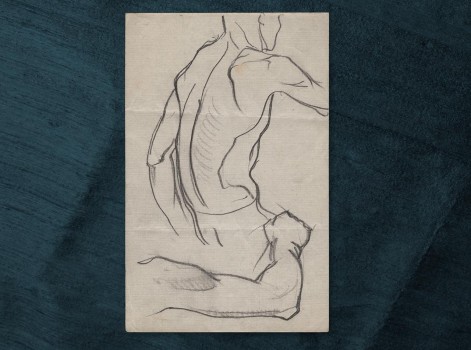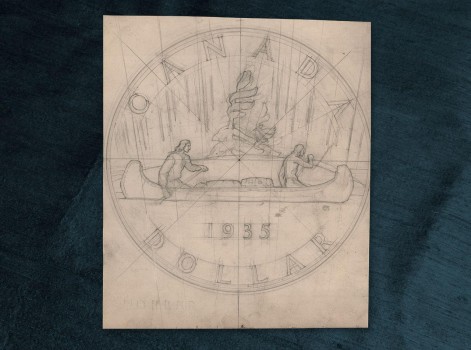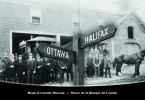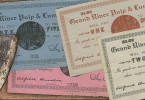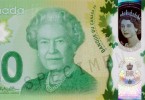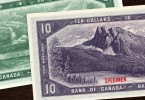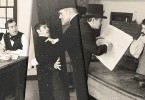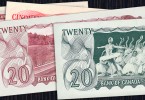Coin designs of Emanuel Hahn
An Emanuel Hahn First World War memorial design in Lindsay, Ontario. (Wikimedia Commons, Richard BH, Hamilton, ON)
Emanuel Hahn was a celebrated Canadian sculptor whose work can be seen in the monuments of many Canadian cities. Born in Germany in 1881, Hahn immigrated to Canada with his family at the age of 7. Along with medals and a number of significant war memorials, Hahn designed some of Canada’s most distinctive and iconic coins. The voyageur silver dollar, the Bluenose dime, the caribou 25 cent piece and the 1939 silver dollar commemorating the Royal Visit of King George VI and Queen Elizabeth were all Hahn designs.
Pencil drawing by Emanuel Hahn sketching features proposed for the back of the 1935 silver dollar. 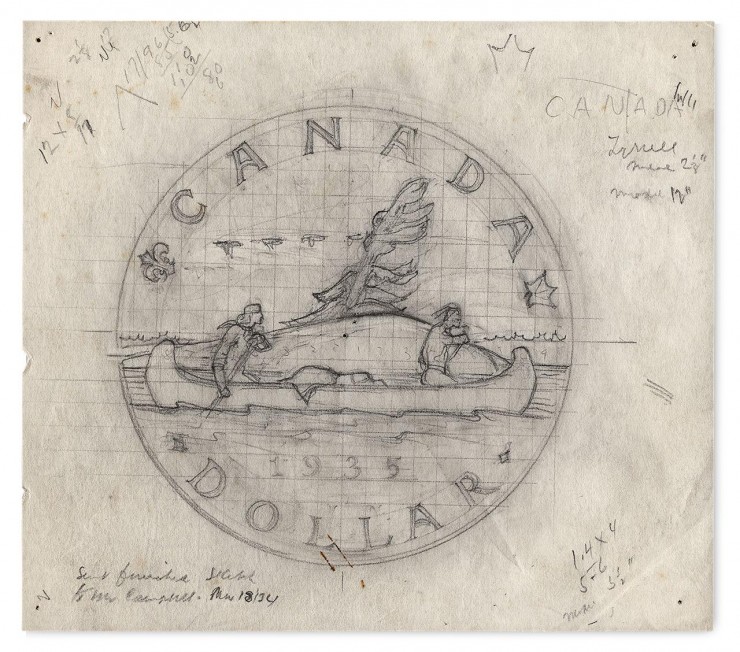
(NCC 1963.059.015.004)
In 1934 the Department of Finance invited Emanuel Hahn to submit a design for a silver dollar commemorating the silver jubilee of the reign of King George V. Hahn corresponded with the Royal Mint in London and the Royal Canadian Mint to gain insight into the process of minting a coin before submitting a drawing depicting a voyageur and a First Nations man paddling a canoe. To ensure accuracy, Hahn studied the designs of traditional canoes and the paintings of Frances Anne Hopkins. Hahn’s design was approved with only a few minor changes and was used as the standard pattern for the Canadian silver dollar until the introduction of the ‘Loonie’ in 1987.
Following the success of the voyageur silver dollar, Hahn was among several artists invited to submit designs for new Canadian coinage to be released in conjunction with the accession of King George VI, in 1937. Hahn produced no less than 16 sketches. His caribou (proposed for both the nickel and the quarter) and his Bluenose were both selected for the new coins. All of the designs put into circulation in 1937 are still to be found on Canada’s circulating coinage today. Hahn left an impressive mark on Canadian currency and all Canadians can be proud to have a ‘Hahn original’ in their pockets.
Reverse of 1935 silver dollar designed by Emanuel Hahn. 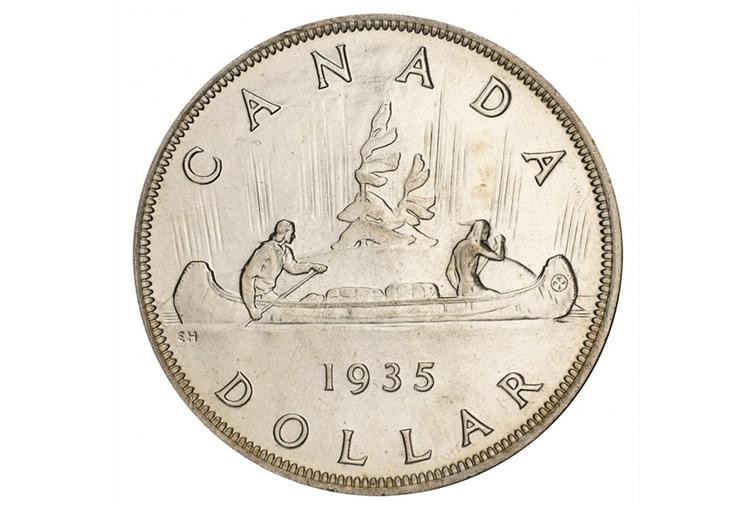
(NCC 1978.058.285b1)
Emanuel Hahn’s legacy of coins, drawings, plaster models and correspondence is preserved in the National Currency Collection of the Bank of Canada.
The Museum Blog
Decoding E-Money II
By: Graham Iddon
This has been an extremely challenging exhibition to develop. We are taking, for us, the unprecedented step of interpreting something that is not only current but continually changing.
New Acquisitions
By: David Bergeron
In late April of 2015, the National Currency Collection finally succeeded in acquiring a Spanish gold cob—famous in legends and tales of pirates and their buried treasures!
What’s in Your Stocking?
By: Graham Iddon
Every prop in the holiday drama generally has some sort of symbolic meaning—evergreen trees: life in the dead of winter, holly: Christ’s crown of thorns, the dreidel: Jewish resistance to oppression. Money, on the other hand, only seems to symbolize itself.
Money from Space
Do you notice anything peculiar about this bank note? It’s blue; it’s denominated as 5-dollar; it has handsome portraits of Sir Wilfred Laurier on it…hold on a minute!Royal Canadian Numismatic Association
By: Raewyn Passmore
Nova Scotia has long been a centre of trade that connected Europe, New England and the West Indies. Following the American Revolution, Halifax became the primary British port in North America and a hub of financial activity.
Unpacking the Collection 3
By: David Bergeron
Before banks were established in remote regions of Canada, paying employees involved shipping currency long distances into wild and often lawless locations. The alternative to this risky enterprise was for the company to issue its own money. Called scrip…
The 2015 Commemorative $20 Bank Note Revealed
By: Graham Iddon
It’s a historic day for us as well. It isn’t every day that the Bank of Canada introduces a new commemorative note.
Unpacking the Collection 2
By: David Bergeron
During 1952, Comfort produced a number of pencil and watercolour design models for the face of the new notes. Some were updates of the traditional style while others were radically modern treatments.
Swindle! Canadian Phantom Banks
By: Graham Iddon
In exchange for pizza and a day out of the office, several Bank employees were persuaded to dress up in period costumes and re-enact three key moments from the history of this shady “bank”.
Unpacking the Collection 1
By: David Bergeron
In the mid 60s, high denomination notes were in such low circulation that Bank of Canada Governor Louis Rasminsky and the Minister of Finance discussed the possibility of actually dropping the denomination altogether.
